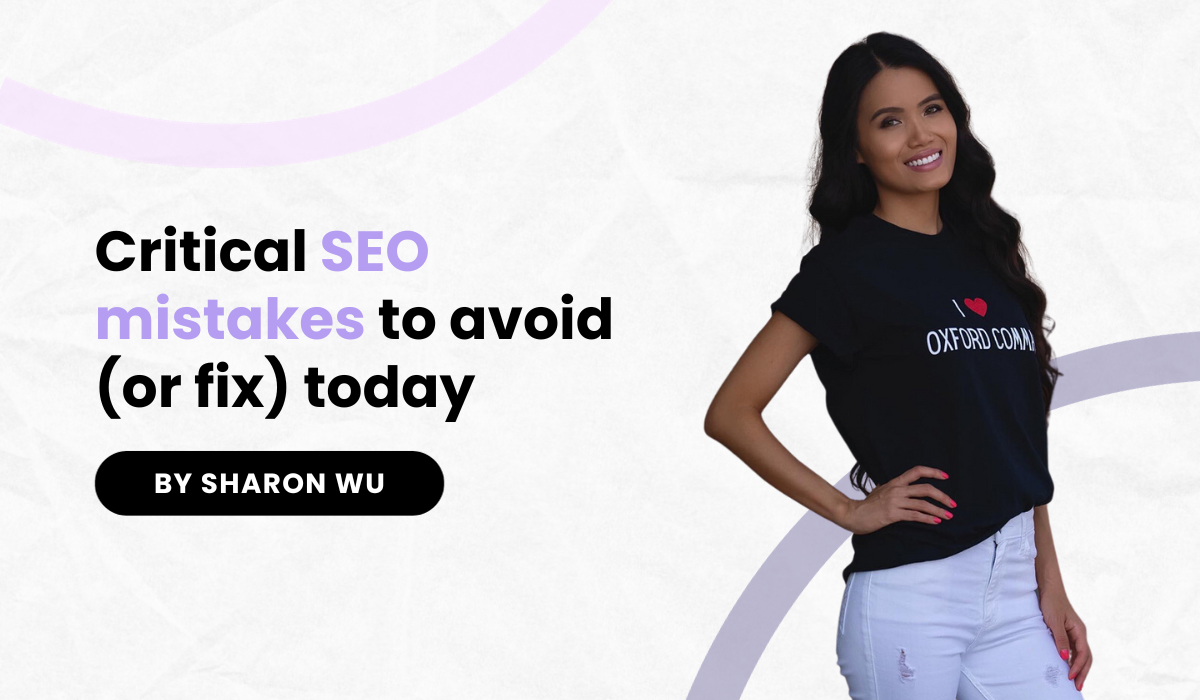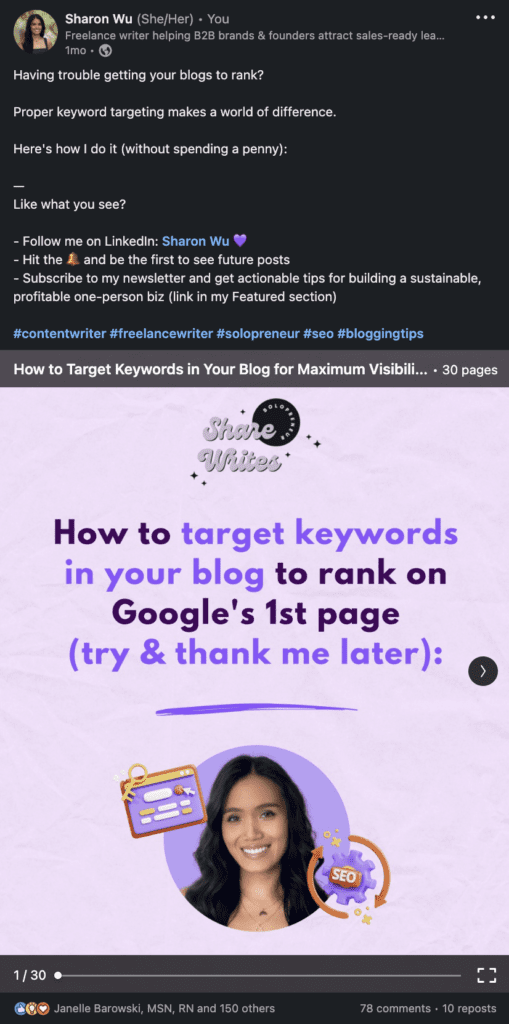Making SEO mistakes can be costly for business. But with so many factors to juggle, it’s easy to slip up.
You’re not alone if your site isn’t on the first page yet. Many companies invest significant time and resources into SEO but don’t get the results they expect.
Often, this comes down to a few avoidable SEO mistakes that sabotage rankings. Even one small error can plummet your site to the second page or beyond.
But with the right optimizations, your content can reach its full potential.
In this guide, I’ll share critical SEO mistakes I’ve made before so you don’t have to (or fix them if you already are). By avoiding these common errors, you can gain visibility within a few months.
Let’s get into it!
Mistake #1: Not conducting comprehensive keyword research
Thorough keyword research is the absolute foundation of effective SEO. Without it, you’re guessing what terms you should optimize your site and blog for.
You need to find keywords that meet 2 criteria:
1. High search volume: This indicates people are looking for content on these topics
2. Low difficulty scores: This means fewer sites are targeting those terms
Finding “sweet spot” keywords with this balance of high volume and low competition is key to ranking quickly.
Here’s how you can identify these untapped opportunities:
- Leverage tools like Google Keyword Planner and Semrush. These help you discover keyword volume and difficulty scores.
- Study your competitors’ websites. Learn what terms they target and go after these too.
- Include target keywords in titles, headers, image alt text, meta descriptions, and content. Don’t over-optimize, though!
- Structure your information architecture around priority keywords and supporting phrases.
Doing comprehensive keyword research is the only way to see the full landscape and identify the best terms to focus your efforts on.
Mistake #2: Overlooking local SEO opportunities
Many businesses fail to optimize their SEO strategy for local customers. And they’re leaving money on the table as a result.
46% of mobile searches have local intent — people are looking for products or services near them.
Ranking for these high-converting local searches must be a priority.
Action steps for effective local SEO include:
- Complete your free Google My Business listing. Help people get to know your business.
- Display your business name, address, and phone number on your site to establish trust and authority.
- Optimize website content around local keywords like “best brunch in Seattle” or “San Diego photographer.” Make it known what you offer to those nearby.
- Get more online reviews. This is an excellent way to build credibility with potential customers in your area.
- List your business on local directories and geo-targeted sites.
When your content shows up for searches in your geographic area, you gain an advantage over competitors who ignore local SEO.
Pro tip: If you’re a service-based business not necessarily targeting locals, you can still benefit from taking some of these steps.
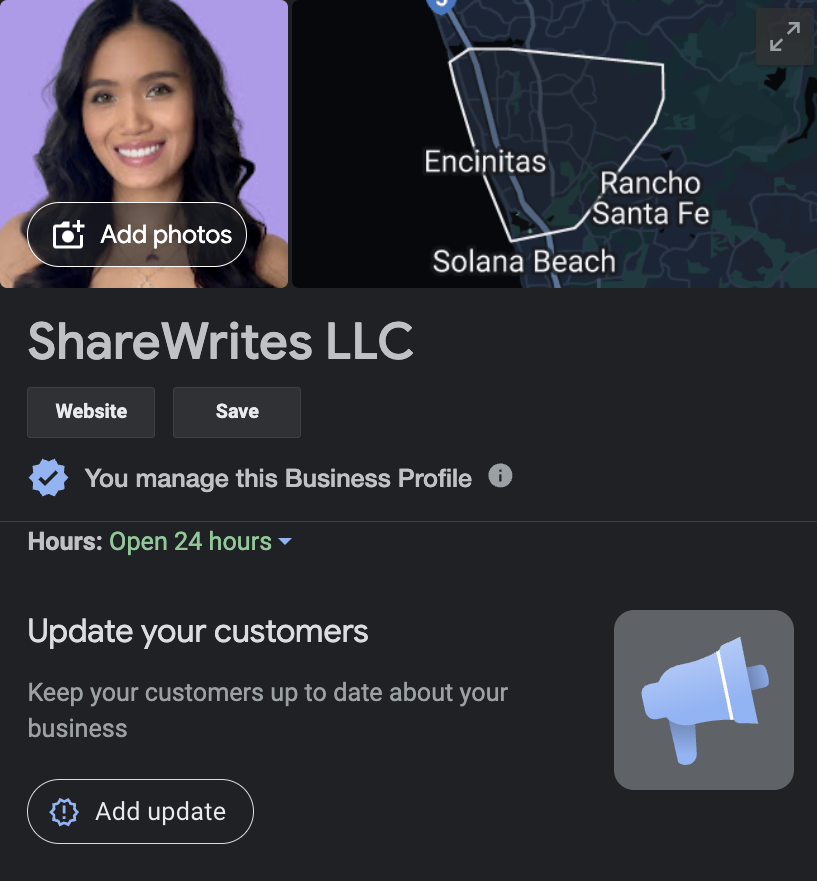
For example, I’m a freelance writer. I still have a Google My Business profile to help people discover me online. Sometimes businesses prefer to hire within their city or nearby, even if the work is totally remote. With a profile set up, you’ll be easily discoverable.
Mistake #3: Creating low-quality, thin content
Publishing content that is poorly researched, too short, or unhelpful to readers is a fast way to tank your SEO.
Weak, thin content lacks the depth and expertise search engines want to see before promoting your content.
Satisfy your audience and Google by ensuring your content is:
- Comprehensively researched and includes credible sources (demonstrate your knowledge).
- Covering topics thoroughly (minimum 1,000 words) — shoot for long-form content whenever possible.
- Packed with relevant data points, statistics, and case studies to build authority on topics where it makes sense.
- Valuable to readers by providing actionable tips, detailed advice, explanations, and solutions.
- Optimized for SEO with targeted keywords, formatting, media, and more.
Well-crafted in-depth content not only follows Google’s quality guidelines but also helps establish your brand as a thought leader worth paying attention to.
Publishing content people genuinely want to read and link to is how you build organic search visibility.
Mistake #4: Not getting quality backlinks
Backlinks remain one of the strongest ranking factors. Yet, many businesses invest solely in on-page SEO while neglecting link building. This makes ranking an uphill battle.
Securing backlinks from trusted external sites reinforces your own website’s authority and boosts you higher in rankings.
Here are my favorite proven tactics to get authoritative sites linking to you:
- Identify influential sites to connect with and provide value in exchange for banklinks.
- Get featured in roundups, lists, blog posts, case studies, or interviews on authoritative niche sites related to your industry.
- Promote your content on social media to generate organic backlinks as people naturally share your content.
Slowly cultivating a diverse portfolio of backlinks to your site from reputable domains will work wonders for increasing your site’s trust and authority in Google’s eyes.
Mistake #5: Having a slow website
53% of visitors will abandon a website if it takes over 3 seconds to load.
It’s no secret that site speed significantly impacts SEO rankings, user experience, and conversions.
Still, many neglect speed optimization and end up with a snail-paced website that hurts their business.
Vastly improve your site’s speed by:
- Checking it on Google PageSpeed Insights to identify areas for improvement
- Reducing code bloat in CSS, JavaScript, and HTML files through minification
- Optimizing images to compress file sizes without losing quality
- Enabling caching and compression technologies
- Fixing broken links
Fast site speed indicates technical proficiency, keeps visitors engaged, and helps pages convert more visitors into leads and customers.
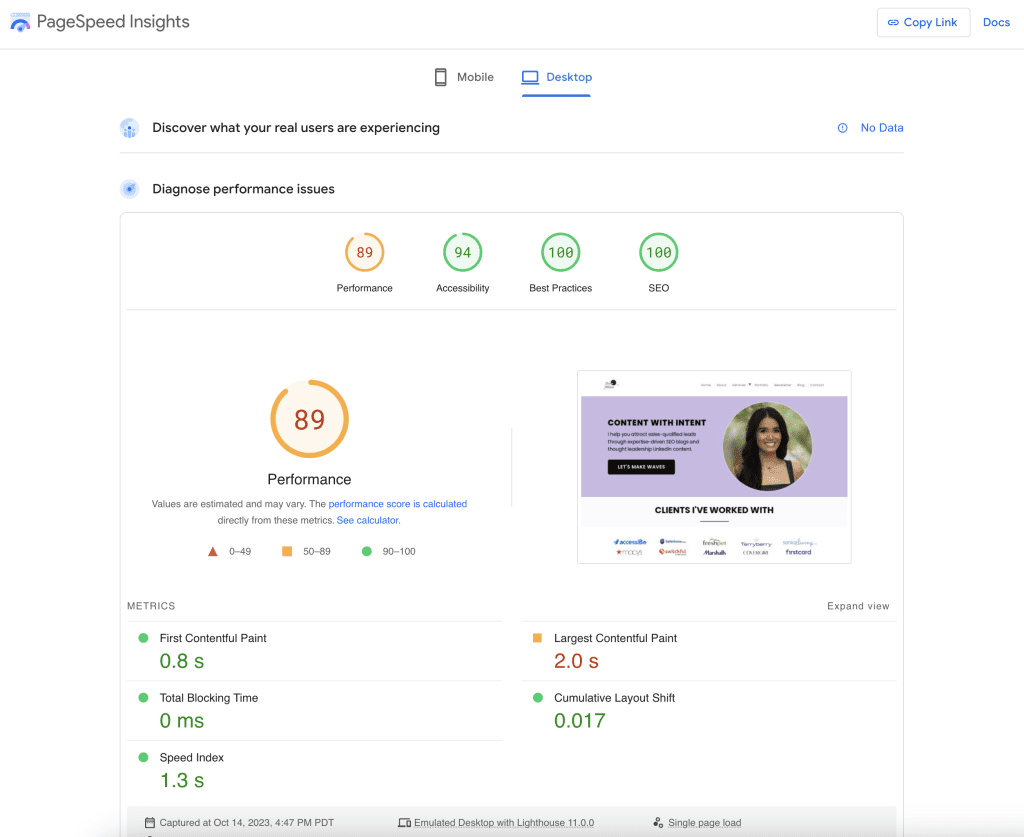
TL;DR?
Make speed optimization a standard practice, not an afterthought. Monitor and improve key site speed metrics regularly.
Mistake #6: Ignoring your overall online brand visibility
Here’s a mistake too many businesses make:
Focusing exclusively on SEO and neglecting their overall online presence.
Your website is only one part of the equation. To maximize brand visibility, you need a coordinated SEO strategy across all relevant Google channels.
Widen your reach by optimizing:
- Google My Business listings with complete profiles, posts, photos, local content, and calls to action to help people find and engage your local business
- Content tailored for Google Discover traffic and featured snippets to get your brand front and center for relevant searches
- Video SEO on YouTube to get content seen (use playlists, compelling titles, quality descriptions, and target keywords)
- Structured data markup so your brand and content appear prominently in rich result SERPs
- Social media accounts like LinkedIn, Facebook, and Pinterest to drive visitors back to your site
Focus your efforts beyond just your website. Appearing across Google’s ecosystem gives you more opportunities to connect with potential customers.
Mistake #7: Not keeping up with Google’s algorithm changes
Google rolls out hundreds of algorithm updates annually. Each one shifts the ranking factors and landscape.
If you aren’t keeping up, you risk having your rankings plummet unexpectedly after a new update rolls out.
To stay informed on Google’s evolving algorithms:
- Closely follow Google’s algorithm news section and official blog announcements
- Read reputable SEO blogs, forums, and experts covering new updates as they’re released
- Watch your analytics for any sudden organic traffic drops around Google update rollout dates
- Adapt your SEO strategy based on new algorithm focuses and changes to avoid future declines
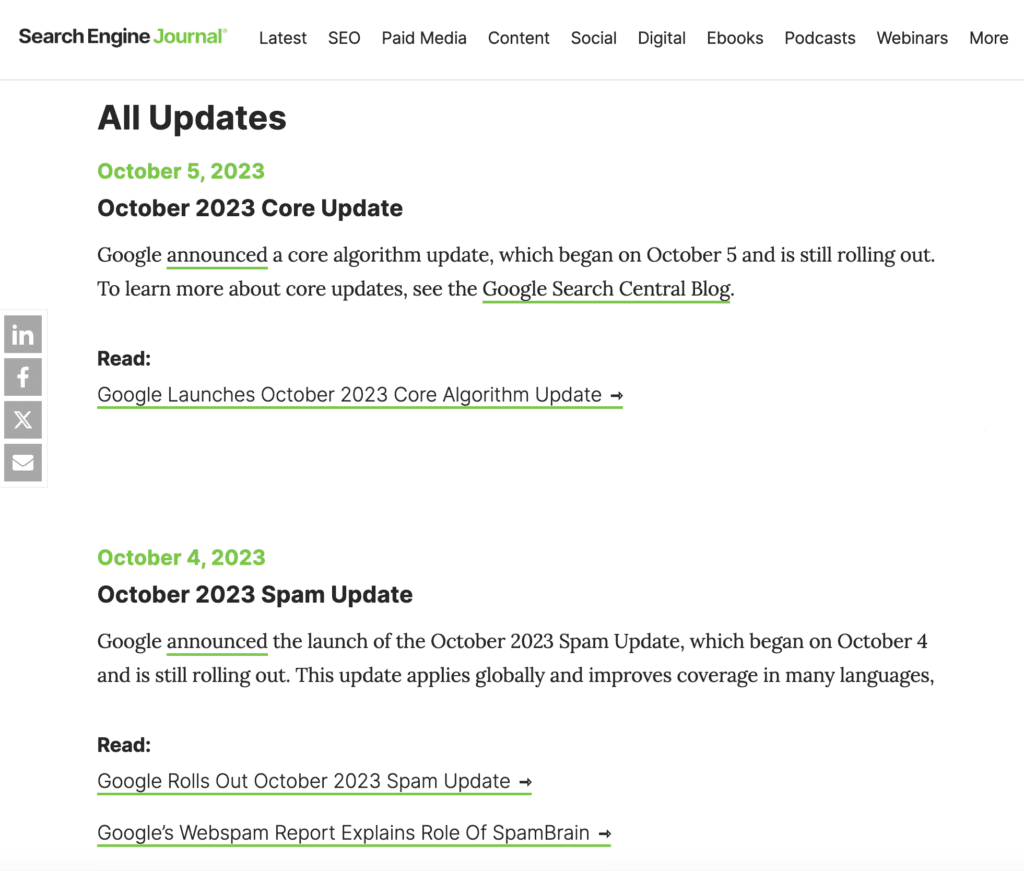
Knowledge is power when it comes to algorithms. Staying continually educated ensures you can prepare for updates and capitalize on new optimization opportunities.
Other common SEO mistakes to sidestep
Here are a few other quick SEO mistakes to avoid:
- Using duplicate content across pages and sites (always craft original content!)
- Having a toxic backlink profile with too many low-quality links (disavow bad links)
- Not updating old website content (add new blog posts and refresh outdated information often)
- Weak technical SEO implementation (handle this early to avoid serious problems later)
- Poor internal linking structure (link to relevant pages using keywords)
- Overlooking your site’s user experience on mobile devices (test on actual phones)
- Not addressing search intent (add an FAQ section at the end to answer questions people might ask about your content)
Dodging common SEO pitfalls like these requires knowledge of best practices and regular website maintenance. But it leads to amazing results.
Invest in a solid SEO strategy to outrank competitors
By avoiding damaging SEO mistakes, you gain a distinct competitive advantage in the search rankings.
Quick recap:
- Conduct thorough keyword research to identify high-potential targets
- Create compelling, in-depth content optimized for those terms
- Monitor your site speed and technical infrastructure
- Keep up with Google’s evolving algorithms
- Tend to your online visibility
- Don’t sleep on local SEO
Most importantly, focus on providing genuine value to readers through expertise and problem-solving. Building trust and authority leads to sustainable growth.
Apply these principles when writing your blogs, and your website will outperform competitors to consistently rank higher in organic search. Over time, you’ll generate more qualified traffic on autopilot month after month.
Prefer a freelance writer to write value-packed thought leadership content for you? I help businesses and founders attract sales-ready leads through SEO content. Get in touch!
Frequently asked questions (FAQs)
What are the most damaging SEO mistakes?
The most damaging SEO mistakes are thin content, not doing keyword research, slow speeds, duplicated content, poor technical SEO, toxic links, ignoring algorithms, and an overall incomplete online presence.
What’s the best way to learn SEO strategies?
Read SEO blogs and forums or explore online courses like Hubspot Academy’s free SEO courses. Use tools like Google Search Console, study competitors’ strategies, and track your own site’s rankings. The best way to learn is to put theory into practice.
What specific on-page SEO factors are most important?
The most important on-page factors are using keywords in content, writing quality content, internal linking, including optimized media, and adding metadata like informative meta descriptions.
Should I focus on SEO or PPC first?
Focus on improving SEO first to build sustainable organic rankings. Then amplify those results further with targeted PPC ads. SEO takes more time, so dedicate initial efforts there.
When will I notice results from proper SEO efforts?
It can take 2-6 months to begin seeing incremental SEO results. Achieving significant page 1 rankings often takes 6-12+ months of consistent work. Have realistic expectations.
Can poor technical SEO ruin my site?
Yes, poor technical SEO leads to issues like crawl errors, duplicate content, security problems, slow speeds, and penalty risks. Handling technical SEO properly from the start prevents this.

